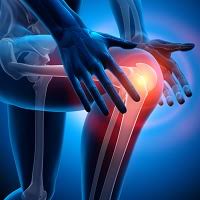How to Manage Painful Knees Caused by Osteoarthritis?
Knee pain due to osteoarthritis is extremely common; according to https://www.arthritis.org, more than 31 million Americans suffer from it and is unarguably the leading cause of adult disability in the U.S. Not only is osteoarthritis in the knees an extremely painful condition but also it is progressive and keeps on increasing in intensity with age.
 The pain is usually compounded by obesity as increased body weight puts more pressure on the joints. Fortunately, there are a number of ways of managing knee pain that will ensure a better quality of life for the patient. Some effective pointers:
The pain is usually compounded by obesity as increased body weight puts more pressure on the joints. Fortunately, there are a number of ways of managing knee pain that will ensure a better quality of life for the patient. Some effective pointers:
Perform Exercises That Are Gentle on The Knees
Certain low-impact exercises like walking, swimming, biking, etc. are considered to be joint-friendly as they help to keep the joints properly aligned and functioning by helping to build adequate strength.
However, it is best for those suffering from osteoarthritis to consult their doctors before commencing a new exercise regimen.
It is very important not to indulge in exercise or sport that involves taxing the already-damaged knees; doctors advise that if the exercise hurts, it is a good idea not to continue with it. A proper fitness plan should ideally include aerobic exercise along with flexibility and strength training.
Ensure Proper Warming Up and Cooling Down Before and After Exercising
If you have osteoarthritis in the knee, it is all the more important that you do not start exercising vigorously right from the start of the session as it increases the chances of sustaining an injury.
It is invariably better to engage in warm-up exercises so that your joints and muscles are properly lubricated. The same thing applies to cool down after the workout. Ask your trainer about the proper warming up and cooling down exercises that will ensure that the damage to your knee joints is not aggravated.
Maintain Weight
Considering the most work your knee joints do is to bear your weight, it makes eminent sense not to tax them unnecessarily with excess body weight.
If, as per the accepted BMI benchmarks, you are overweight, you should actively consider losing weight by a combination of exercise and diet so that you can experience pain relief and slow down the rate of cartilage degeneration.
Some people seem to be genetically predisposed to osteoarthritis; read about ongoing stem cell therapy on nationalstemcelltherapy.com
Wear Shoes That Are Comfortable
Most people do not pay attention to this seemingly-minor detail but end up wearing shoes that are not comfortable and transmit each and every shock of walking right up the affected knee joint causing immense pain.
If you have osteoarthritis in the knees, you will benefit significantly by choosing footwear that is flat, flexible, and cushioned because they will protect your joints from the impact of walking.
Conclusion
Knee pain due to osteoarthritis can be an extremely painful condition that can make even normal activities very difficult. Since there is no common cure for it at the moment, you need to take all steps to ensure that you exert the least force on your knee joints. Weight reduction, proper exercise, and comfortable shoes can reduce the discomfort considerably.
Perform Exercises That Are Gentle on The Knees
Certain low-impact exercises like walking, swimming, biking, etc. are considered to be joint-friendly as they help to keep the joints properly aligned and functioning by helping to build adequate strength.
However, it is best for those suffering from osteoarthritis to consult their doctors before commencing a new exercise regimen.
It is very important not to indulge in exercise or sport that involves taxing the already-damaged knees; doctors advise that if the exercise hurts, it is a good idea not to continue with it. A proper fitness plan should ideally include aerobic exercise along with flexibility and strength training.
Ensure Proper Warming Up and Cooling Down Before and After Exercising
If you have osteoarthritis in the knee, it is all the more important that you do not start exercising vigorously right from the start of the session as it increases the chances of sustaining an injury.
It is invariably better to engage in warm-up exercises so that your joints and muscles are properly lubricated. The same thing applies to cool down after the workout. Ask your trainer about the proper warming up and cooling down exercises that will ensure that the damage to your knee joints is not aggravated.
Maintain Weight
Considering the most work your knee joints do is to bear your weight, it makes eminent sense not to tax them unnecessarily with excess body weight.
If, as per the accepted BMI benchmarks, you are overweight, you should actively consider losing weight by a combination of exercise and diet so that you can experience pain relief and slow down the rate of cartilage degeneration.
Some people seem to be genetically predisposed to osteoarthritis; read about ongoing stem cell therapy on nationalstemcelltherapy.com
Wear Shoes That Are Comfortable
Most people do not pay attention to this seemingly-minor detail but end up wearing shoes that are not comfortable and transmit each and every shock of walking right up the affected knee joint causing immense pain.
If you have osteoarthritis in the knees, you will benefit significantly by choosing footwear that is flat, flexible, and cushioned because they will protect your joints from the impact of walking.
Conclusion
Knee pain due to osteoarthritis can be an extremely painful condition that can make even normal activities very difficult. Since there is no common cure for it at the moment, you need to take all steps to ensure that you exert the least force on your knee joints. Weight reduction, proper exercise, and comfortable shoes can reduce the discomfort considerably.













Leave a Feedback